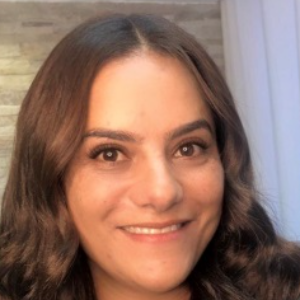Title : In vitro and in vivo osteogenic potential of bioactive glass PVA hybrid scaffolds colonized by mesenquimal stem cells
Abstract:
Bioactive glass/polymer composites are promising materials for bone tissue engineering. In this project has developed porous hybrid scaffolds comprised of 50% polyvinyl alcohol/50% bioactive glass with a 70%SiO2–30%CaO composition. Prior studies have also shown the adequate structural and mechanical behavior of these scaffolds. As such, the present study investigates the in vitro and in vivo osteogenic potential of the scaffold, using mesenchymal stem cells (MSC) from the bone marrow of female rats. MTT, alkaline phosphatase activity, collagen secretion and Von Kossa staining were conducted to evaluate the differentiation ability of MSC in an osteogenic medium. The in vitro results indicate an increase in both cell proliferation and osteogenic differentiation when the hybrid material is present. Von Kossa staining showed a progressive increase in mineralization nodules, coupled with time differentiation. For the in vivo evaluation, three groups were studied: (1) group implanted with the hybrid scaffold, (2) group implanted with scaffold colonized by non-differentiated MSC and (3) group implanted with scaffold colonized by differentiated MSC. The scaffolds were subcutaneously implanted on the back of Wistar rats for 1–8 weeks, and histological and histomorphometric analyses were performed. The tissue ingrowth proved to be higher in the groups colonized by MSC in the first week. In the second week, only the hybrid colonized by differentiated MSC presented a larger percentage of connective tissue. In the third, fourth and eighth weeks, all groups presented 70% of the hybrid scaffold filled with tissue. However, only the group with differentiated MSC presented some form of osteoid tissue, indicating that the hybrid scaffold with differentiated MSC does indeed present osteogenic potential.
Audience Take Away:
The work is directed to the growth of stem cells differentiating into osteoblasts forming bone tissue. The audience watching the presentation will be able to understand how to differentiate these cells and how they react to a bioactive biomaterial. The production of osteoid under these conditions is the highlight of the work. We will explain in detail how we achieve this and all the analysis that the researcher must do.This research can direct the researcher who is producing biomaterials used in bone tissue repair in the following way:
- Demonstrate the physical-chemical analysis of the biomaterial
- Demonstrate the correct route of synthesis of bioactive material
- Show how stem cells differentiate and what needs to be done for this to occur correctly
- In vivo experiments are the most important when you want to validate a biomaterial, especially when this material induces cell proliferation and differentiation



